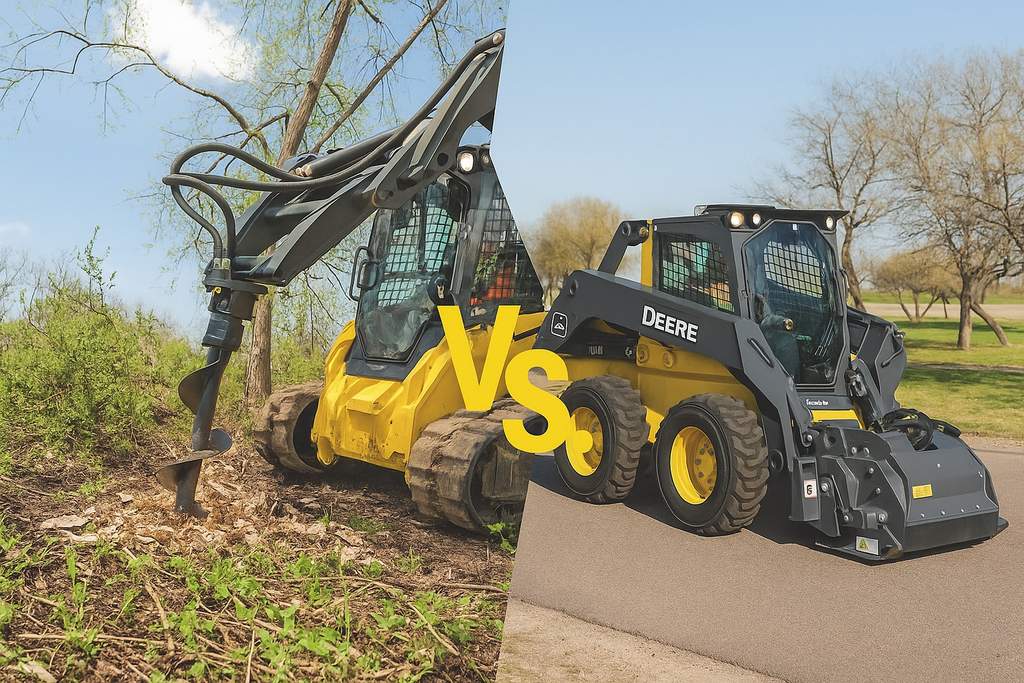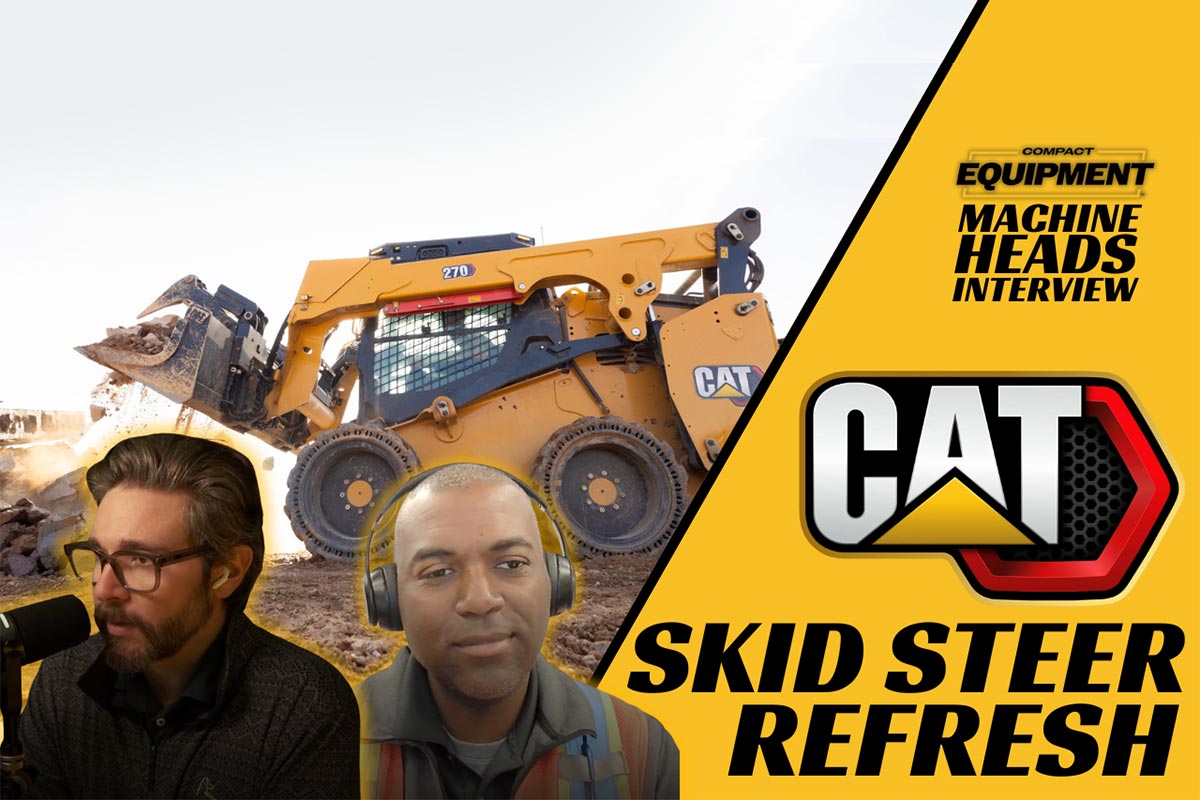Skid Steer Meets Box Plow
More than one long-range forecast is calling for a return this year to the kind of snowfall levels we all know and love. For those of us who make our living keeping the public safe and mobile during winter months, a heavy snowfall is an exciting opportunity and a huge challenge. Sometimes meeting that challenge will mean barreling across a wide open lot in a large loader, pushing a monster-sized box plow.

For moving large quantities of snow in the quickest possible time, you just can’t beat that type of setup. But sometimes, the site or situation calls for the finesse and agility of a skid steer. These machines are uniquely maneuverable, which makes them great for snow removal in restricted spaces. Even on a large site, you may use a skid steer and snow pusher to do the preparatory work (clearing snow out of spaces too small for a big loader, along the edges or perhaps pulling snow away from garage doors) before sending in the big pushers.
Skid steer loaders today range in size from around 20 to 100 hp and 700 to 3,700 lbs of rated operating capacity. There’s a box plow to suit all of these machines but in practical terms most snow-removal professionals will choose a mid-sized option. As skid steers get larger, they become less maneuverable and, of course, more expensive.
The wise advice seems to be: Choose only as much machine as you need. Typically, the largest pusher used with a skid steer would be around 12 ft in width, with 8-ft and 10-ft options being the most popular. To handle a 10-ft pusher you want a machine with at least 1,700-lbs rated operating capacity. In many cases, wheels beat tracks for snow removal. While nothing gives perfect traction in snow, wheels seem to offer more grip than tracks (especially if you switch to winter tires), and they do more to prevent sideways sliding of the machine. Now, assuming you have the machine all ready to go, what should you bear in mind when using your skid steer and box plow combination?
It’s easy to carry a box plow back on the heels without realizing it. This causes the shoe to wear down excessively on the back portion. Carrying the box tipped forward on the toes of the shoe will create the same issue with uneven wear, as well as allowing snow to escape the box. To avoid this you need to make sure that the box is level before you start your plowing run, and then don’t touch the roll lever until the end of the pass. Some modern box plows have floating or self-leveling shoes, which take away a lot of the need for watching the level of the box.
As a general rule of thumb, you should only apply a small amount of down pressure, if any. Pressing the plow into the ground with too much force will cause premature wearing of shoes and cutting edges. It can also cause the wheels of the machine to lift off the ground slightly, reducing traction. Choosing a box plow equipped with a steel trip edge will reduce the need to apply down force because a spring-loaded steel blade will slice through even hard-packed snow. Rubber blades work well with fresh or slushy snow.
Some operators recommend having the arms of the skid steer in float mode while plowing. This allows the box to follow the ups and downs in the level of the pavement. On the downside you may feel you lack a certain amount of control with the arms in float. On the plus side, floating the arms will make the job easier in that you don’t have to continually adjust the position of the box to maintain even contact with the ground. If you choose not to use float mode, you will need to make small adjustments on the fly to maintain even pressure as the gradient of the ground changes.
Whatever your machine, choosing a well-built snow pusher will dramatically improve your productivity. As snow removal professionals, when we choose the best equipment and follow best practices, we make an important contribution to public safety, whatever nature throws our way.
Matthew Price is the marketing manager for Avalanche Snowplows, based in Toronto.




